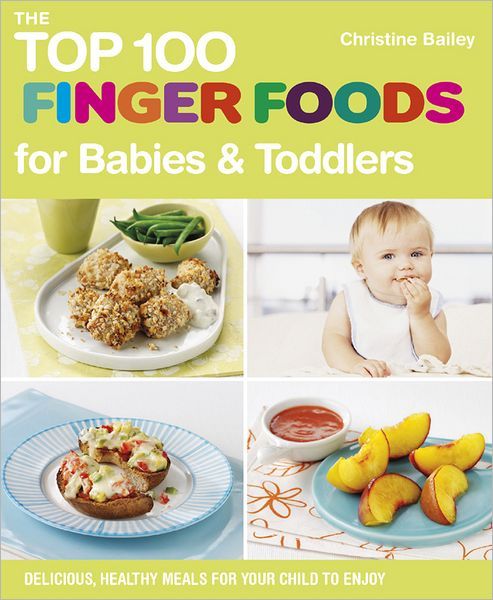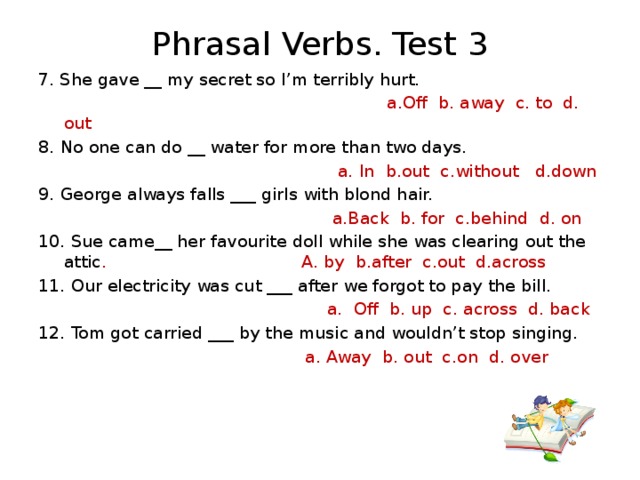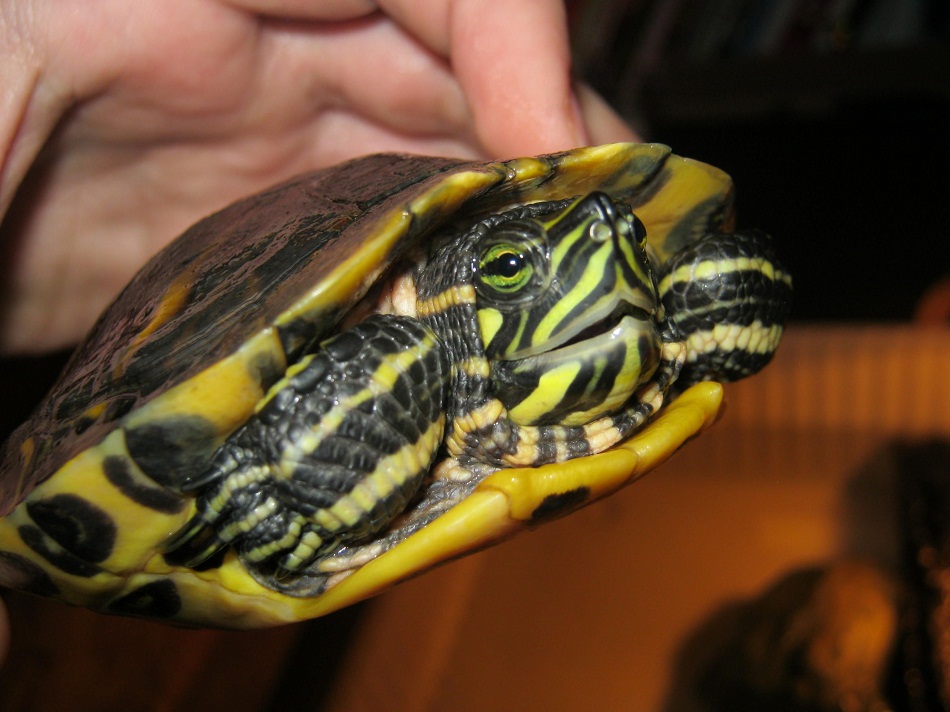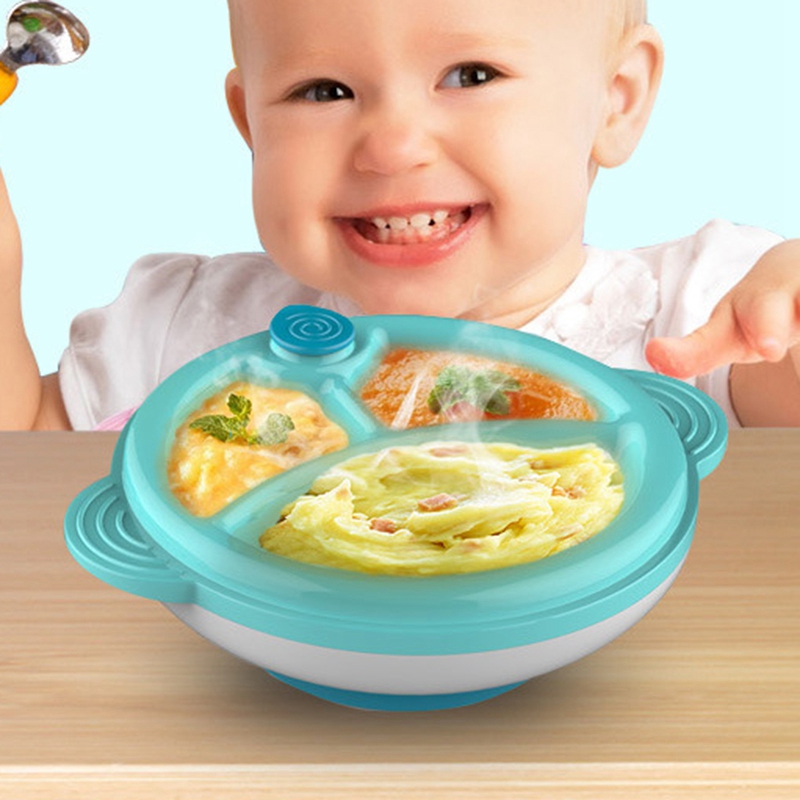Hand feed baby rabbits
Hand-Raising Baby Rabbits - Feeding, Vaccinations & More
Hand-raising baby rabbits can be tricky and demanding, requiring a lot of time and dedication. This responsibility should never be taken lightly, and some points should be considered before deciding to hand-raise a baby bunny.
First and foremost, it is important to be 100% sure that the mother rabbit isn’t feeding the babies. Unless the mother rabbit is known to be deceased, there is a good chance that she is feeding her babies, even if it appears that she might be ignoring them.
A mother rabbit does not constantly tend to her babies the way we might think. Instead, they generally feed their babies only once or twice per day and then leave them alone, which is normal and natural behaviour. In the wild, a mother rabbit generally stays as far away from the nest as possible to avoid attracting predators to her babies. She will only revisit the nest to feed her young.
Signs of Neglect
If you think the mother rabbit is “ignoring” her litter, have a look at the babies. If the babies’ tummies are round and full looking, they are warm, their skin is not wrinkled, and they are sleeping calmly in the nest, then the mother rabbit is likely feeding them. If the babies are wrinkled, cold or have shrunken bellies, then this is a sign you may have to intervene.
Handling Newborn Rabbits
Before handling the babies, you must wash your hands well. This removes bacteria and eliminates any smells from other objects or animals that can stress the babies. Once your hands are clean, rub your hands in a bit of clean, fresh hay and on the mother rabbit’s fur to scent your hands.
Feeding Newborn Rabbits
Before starting any syringe or bottle-feeding, it is worth trying to get the babies to feed off their mum. There are a couple of ways to do this.
-
- Hold the mother over the babies in the nest to give the babies enough time to feed.
- Another option is to hold the mother rabbit on her back in your arms and gently try to put each baby onto a nipple to self-feed.
 Sometimes it is helpful for the babies if a small amount of milk is expressed from the nipple to entice the baby to suckle.
Sometimes it is helpful for the babies if a small amount of milk is expressed from the nipple to entice the baby to suckle.
If these two methods prove unsuccessful is not successful, then you may need to start hand-raising.
Providing Warmth
It is best to keep the babies in a warm, quiet place in a nest. Bunny fur is the best lining for the nest, but clean cotton wadding will do as a substitute. Just be sure the babies do not get tangled in it. For heating, two or more babies usually can snuggle and keep each other warm if they have a good nest. If there’s only one baby, a warm water bottle or heat pack wrapped in a soft towel can provide an excellent heat source however be sure the baby can crawl away if it feels too warm.
Formula and Feeding Supplies
We recommend using the Wombaroo Rabbit Milk as it is well balanced and contains a ‘milk oil’ equivalent which is important for baby rabbits. It comes as a powder that can be mixed with warm water to make milk for the babies. All the mixing instructions are on the box. Wombaroo Rabbit Milk can be purchased from The Unusual Pet Vets, some veterinary clinics and pet stores.
All the mixing instructions are on the box. Wombaroo Rabbit Milk can be purchased from The Unusual Pet Vets, some veterinary clinics and pet stores.
You will also need some small plastic syringes for feeding the milk to the babies. These are available from the Unusual Pet Vets, as well as some pharmacies.
You can also purchase small plastic feeding bottles and plastic teats from some large pet shops; however, you will need to buy the smallest teat possible as usually the puppy and kitten ones are too big. Most baby rabbits will feed from a syringe without a problem.
A small set of scales to weigh the baby rabbits will also be required. The amount of milk to feed is dependent on the baby rabbit’s weight. There is a weight chart on the Wombaroo Rabbit Milk box and the mls of milk to be fed over 24 hours. How much the baby rabbit will take in one feeding session depends on how frequently you have the feed them.
Feeding Procedure
When feeding, it is important to prevent aspiration (inhalation) of the formula by the babies.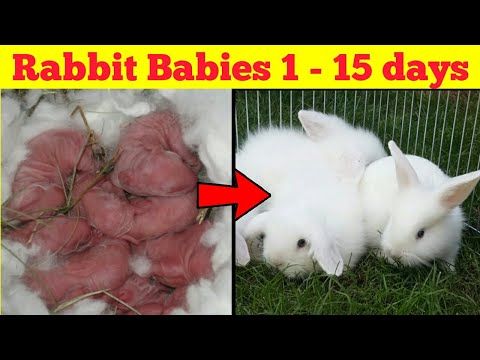 The smallest drop of formula in the lungs can cause fatal pneumonia within a few hours. The following instructions provide a step-by-step feeding guide:
The smallest drop of formula in the lungs can cause fatal pneumonia within a few hours. The following instructions provide a step-by-step feeding guide:
Step 1
Make sure all your syringes and bottles have been washed before use.
Step 2
Baby rabbits can be wiggly and unpredictable, so ensure they are fed in a safe place where they cannot fall.
Step 3
Hold the baby upright (or in some cases on their back gently) in one hand and the bottle/syringe in the other.
Step 4
Babies often resist feeding at first, and you must overcome the temptation to force-feed. If the baby doesn’t accept the teat or syringe, then wet the baby’s lips with a drop of warm formula so they will hopefully lick it off. Once they have swallowed that, repeat the procedure over and over. Be persistent and gentle. In most cases, the baby will soon learn about feeding time and take the formula willingly though they may not do this on the first feeding.
Step 5
Do not be too forceful and squeeze too much formula into the baby rabbit’s mouth.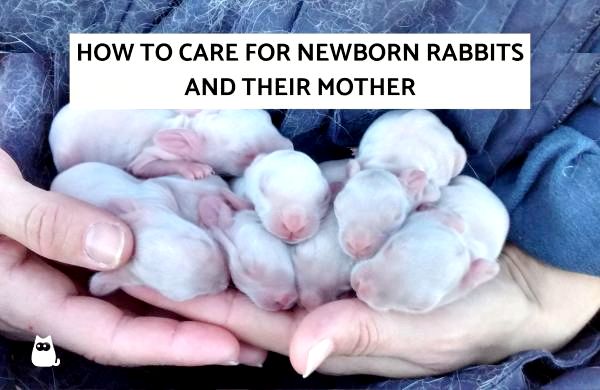 They can aspirate milk quite easily, so only drip the formula slowly for the baby to lick up.
They can aspirate milk quite easily, so only drip the formula slowly for the baby to lick up.
Step 6
If the baby grabs the teat and begins suckling, allow them to do so without adding any pressure yourself. The baby should be able to suckle with enough strength to empty the bottle or syringe without any help from you. If you provide extra force, the baby may accidentally aspirate formula that’s coming in too fast.
Step 7
If the baby does not suckle, it’s generally not a major problem. Most will learn to lap/sip from the tip of the teat, and this is safer in many cases as it does reduce the risk of aspiration. Try to hold the teat/syringe tip sideways or down-pointed (so the plunger is lower than the tip) relative to the mouth to further reduce the risk of aspiration.
Step 8
Until they open their eyes, handle the babies as little as possible when you’re not feeding.
Urination and Defecation
Many newborn mammals cannot urinate/defecate on their own. Many baby bunnies will require the stimulation of the mother’s grooming tongue on their bellies and genital region in order to release a stream of urine and faeces. If you are hand-raising, then you will need to try to mimic this behaviour. To do this, use a cotton ball moistened with warm water, and gently tap/rub the urogenital area until you feel the baby’s abdominal muscles tense and release a stream of urine or pass faeces. Getting this response may take 15-20 seconds of stimulation, or even more in some cases.
Many baby bunnies will require the stimulation of the mother’s grooming tongue on their bellies and genital region in order to release a stream of urine and faeces. If you are hand-raising, then you will need to try to mimic this behaviour. To do this, use a cotton ball moistened with warm water, and gently tap/rub the urogenital area until you feel the baby’s abdominal muscles tense and release a stream of urine or pass faeces. Getting this response may take 15-20 seconds of stimulation, or even more in some cases.
Baby rabbits’ eyes open at about 10 days of age. Once this occurs, you can gradually introduce them to timothy and oaten hay, pellets, small amounts of green vegetables, and water in a shallow dish.
By 2 – 4 weeks of age, normally, baby rabbits will start eating their mother’s caecotrophs to keep their gastrointestinal tract full of good bacteria. If you have access to the mother rabbit or another healthy rabbit’s caecotrophs – mix them with some formula or some warm water and syringe feed this to the babies. It is good to repeat this 2 or 3 times over a 2 – 3 week period to help them establish normal gastrointestinal flora.
It is good to repeat this 2 or 3 times over a 2 – 3 week period to help them establish normal gastrointestinal flora.
Weaning
A mother rabbit feeds her babies for about 3 – 6 weeks, gradually decreasing the frequency of feedings until they lose interest. Your baby bunnies will start to nibble solid food at about the age of two to three weeks, but this does not mean they are ready to be weaned.
If the babies still beg for nursing by the age of 6-8 weeks, you can begin to dilute the formula with clean drinking water to help the weaning process. Start with 25% water to 75% formula, and gradually decrease the percentage of milk until the babies lose interest.
Baby rabbits can then be rehomed to new families by 8 weeks of age, as long as they are fully weaned and eating solids well on their own.
Vaccinations
Baby rabbits should then be vaccinated against Calici Virus when they are eight weeks old, then a booster is required four weeks later, and then bi-annually from then on.
Sterilisation
Rabbits can generally be sterilised from 4 months of age for males and 5 months for females. Male and female baby rabbits should be separated from each other by 10 – 12 weeks of age to prevent any early pregnancies.
If you have any further questions, please don’t hesitate to get in touch with us or book an appointment with a rabbit vet.
How do I hand-feed a baby rabbit?
Hand-feeding a baby rabbit is not for the faint of heart. In fact, the job is very time consuming and is harder to do that what it may seem to be. Not only do you need to know what to feed them, you must also know what the correct amount is for each stage of growth. While under feeding will cause them to starve to death, over feeding them can cause pain and gas, making the baby sick. As you continue to read this article, we will provide the answers that you need to successfully hand rear bunnies.
Bottle options
Choosing the correct bottle is as important as having the correct formula to put into the bottle. For novices, the choices can be confusing. The typical pet-nursing bottles that are sold for kittens and other small animals, but that is not the end-all be-all options you have to work with. There are various types of Syringe feeders, Q-Tips, and sponges. There really is no right or wrong option; however there are right and wrong ways to use each of them.
For novices, the choices can be confusing. The typical pet-nursing bottles that are sold for kittens and other small animals, but that is not the end-all be-all options you have to work with. There are various types of Syringe feeders, Q-Tips, and sponges. There really is no right or wrong option; however there are right and wrong ways to use each of them.
1. PET NURSING BOTTLES: These can be bought at very low prices, in most stores which offer pet supplies. The important thing to note is the nipple size and the fact that you have to make the hole in the tip of the nipple. If you make the hole too large, the babies can get too much formula and possibly aspirate. On the other hand, if you make the hole too small, the babies may not be able to get enough formula and will, essentially, starve to death. Therefore, the best method is to use a pair of (tiny, very sharp) fingernail scissors. Push the tip of the scissors up thru the “inside” of the nipple, and continue pushing until half of the blades are pushed thru and out of the tip.
When you pull the scissors out, pinch the tip of the nipple to expose the cut area, and then working from the outside, using the center of the cut as your center-point, snip an “X” into the nipple. This may need to be repeated to get the hole to produce an effective amount of formula. You will ‘have it right’ when you test the cut. To do this, put water in the bottle, replace the top and nipple, and hold it at a 60-80* downward angle. Pinch the end of the nipple with mild to moderate pressure. If a droplet easily comes out, you are in good shape. If water comes out without the need of pinching the nipple, your hole may be too large. And if there is no droplet or if it requires you to pinch hard and only results in a small drop, then your hole is too small.
You might also like: How to care for a rabbit? 10 Steps!
2. Q-TIPS: These are readily available at most any store, and cheap. This option may be best and easiest to use for newborn babies. You will want to use the type with rounded tips, not the pointed type that are made for make-up applications. There are two ways to use a Q-tip to feed with. The first method is to dip the cotton-end of the q-tip into the formula and allow the baby to suck the formula off of it, then re-dip and repeat. It may take a few tries to get the baby to understand that it is being fed this way, so don’t be too forceful, but keep trying until he gets the hang of it. The next method is to cut a q-tip in half and insert the stick end into the end of a syringe.
You will want to use the type with rounded tips, not the pointed type that are made for make-up applications. There are two ways to use a Q-tip to feed with. The first method is to dip the cotton-end of the q-tip into the formula and allow the baby to suck the formula off of it, then re-dip and repeat. It may take a few tries to get the baby to understand that it is being fed this way, so don’t be too forceful, but keep trying until he gets the hang of it. The next method is to cut a q-tip in half and insert the stick end into the end of a syringe.
Note that the syringe will need to snuggly hold the stick, or formula will just pour out when you try to use it to feed with. Otherwise, when using this method, you will need to be sure the q-tip has the plastic, hollow type sticks. This allows you the option of putting the formula into the syringe and allowing it to flow down and soak the cotton, therefore eliminating the need to continually dip the q-tip into the formula so many times.
3. SPONGES: Buy a pack of make-up wedge sponges. Dip the thin end into the formula, and use the corner edge for the baby to suckle from. This is a better option than the q-tip dipping method in regards that you don’t have to continually dip the sponge. Instead, once the baby has drained the formula from it, you can put more formula on the center of sponge with a dropper, which will then be absorbed down into the tip the baby is nursing from.
4. SYRINGES: Syringe feeding can save a lot of time, however the type of syringe you use will play an important role in how the formula will be accepted.
(A) Rubber Ear Bulb Syringes work very well for this, as the tip of the syringe and the stick of the q-tip are relatively a good fit, although you will still need to “push” the stick into the syringe so that it is snug and will not be easily removed from the baby while suckling from it. One notable caution is to pay attention to the cotton. If the baby chews it and frays the fibers apart, you will want to switch q-tips to a new one; to prevent the baby from swallowing the stringy fibers which might cause choking or GI problems such as Wool Block.
If the baby chews it and frays the fibers apart, you will want to switch q-tips to a new one; to prevent the baby from swallowing the stringy fibers which might cause choking or GI problems such as Wool Block.
(B) Sponge-Syringes can be used in similar method as described above. If opting for this method, you would push the end of the syringe into the wider/thicker end of the sponge about half-way down into the sponge. The notable caution with this method is also as described above; being careful to watch that the baby doesn’t chew any bits of the sponge off, which could result in choking or GI problems.
(C) Slip-On Nipple Syringes would be your other choice. These can be used with several types of feeding tips, from silicone tube to nipple. One of the more popular types is called a “Miracle Nipple”, which slips over the end of a slip-tip and luer-lock syringe as well as small pet bottles, and offers a pre-made hole in the tip (available on Amazon).
Baby Formula
Now that we have covered the container options, let’s look at what you will need to put into the bottle. There are several milk replacers, including kitten formula that can be used safely when feeding orphaned bunnies. However, the best option is Goats Milk, which can often be found in the dairy section of your local grocery or Health Food type stores. Next, you will need Heavy Whipping Cream; also available in the dairy section of your local grocery store. And then you will need Colostrum. The most commonly used form is the powdered “Kid Colostrum” for Goats, which can be found at most feed-supply stores. Once you get these items home, you will need to gather up a few tools: A container with a lid that closes (such as a Water Bottle) for mixing and storing, a small bowl and coffee cup, ½ cup measuring cup, and measuring spoons at 1 Tablespoon and ½ Teaspoon. Now, you will want to put the formula mixture into the mixing/storing container. Here is the recipe: ½ Cup Goat Milk, ½ Teaspoon of Heavy Cream, and 1 Tablespoon (or 10 emptied capsules, if using that form) of Colostrum. Now in your coffee cup, fill half full of water and microwave for 1-3 minutes, or until the water is at a low boil. While waiting on the water to heat, close the container with the formula and shake vigorously for several minutes. Once the water is hot, pour a small amount of the formula into a the small bowl.
Now in your coffee cup, fill half full of water and microwave for 1-3 minutes, or until the water is at a low boil. While waiting on the water to heat, close the container with the formula and shake vigorously for several minutes. Once the water is hot, pour a small amount of the formula into a the small bowl.
(Tip: A washed out single-snack size yogurt cup works great!)
Then place the small bowl of formula into the hot water. This will heat the formula without scorching it, while allowing you to have a more consistent watch on the temperature of the formula. As you would with an infant child, you want the formula to be room temperature or luke-warm. The babies will not drink cold milk, and if it’s too hot it could cause them to be burned.
Feeding the babies
When feeding baby rabbits, there are several things that should be noted. First of all, the babies only need to be fed twice daily – morning and night. And after every feeding, for at least the first 2-3 weeks, each baby will have to be stimulated to potty. It is easily done! Just gently rub or pat the genital/anal area with a warm, soft cloth; however, failure to do so could be fatal. Otherwise, here is a simple chart to show you the amounts that baby bunnies should be fed.
It is easily done! Just gently rub or pat the genital/anal area with a warm, soft cloth; however, failure to do so could be fatal. Otherwise, here is a simple chart to show you the amounts that baby bunnies should be fed.
0-1 week of age: 2 – 3cc per baby
1-2 weeks of age: 4 – 7cc per baby > resist over feeding and do not allow the baby to eat too fast, as this could result in aspiration or gas build up
2-3 weeks of age: 7 – 14cc per baby > start introducing hay
3-6 weeks of age: 14 – 17cc per baby > gather a cecotrope from any healthy, parasite free adult rabbit and mix it into a small amount of the formula for 2-3 consecutive days; may need to syringe-feed this as most babies do not like it and will often try to refuse to eat it… this is an important step in establishing healthy flora in the babies guts. *After this cecotrope introduction, you can also begin offering small amounts of pellets to the babies.
Help! My baby bunny is aspirating
One of the most common forms of death by hand-fed baby animals is due to aspiration. This is the term used for a baby who failed to correctly swallow formula. The liquid gets into the lungs and quickly, the baby “drowns” and dies very quickly while you watch helplessly. But guess what! You CAN save your baby. This is how: place the baby, lengthwise, on the palm of your hand (head at fingertips, tail at wrist) and close your other hand securely over the baby, so that you are cupping it in your hands. Now, standing up, raise your hands to chest level and swing downwards, between your knees. Do this swiftly, but not harshly, and be very careful not to drop the baby. Doing this acts like doing the Heimlich Maneuver, causing the fluid to be forced out and restoring the ability to breath.
How to feed rabbits without a rabbit
How to feed rabbits without a rabbit - this question sooner or later confronts all owners of farms where rabbit breeding is practiced. The best option is to replant the babies with another female or resume natural feeding from their own mother, but this is not always possible. In this case, artificial feeding becomes the only way out.
The best option is to replant the babies with another female or resume natural feeding from their own mother, but this is not always possible. In this case, artificial feeding becomes the only way out.
Is artificial feeding of rabbits justified?
Many rabbit breeders are of the opinion that artificial feeding does not make sense - babies get sick, develop poorly and rarely live more than a few weeks. Indeed, raising rabbits on your own is quite difficult and requires patience, scrupulousness and a sequence of actions. But if everything is done correctly, the rabbits grow up healthy and beautiful.
If you notice that the rabbit is aggressive towards the rabbits, chews them or refuses to feed them, try to stretch her nipples a little, plant and slip the rabbits in this position. You need to hold mom a little so that the kids have time to eat. But when no tricks help, you need to immediately decide on artificial feeding - the rabbits very quickly weaken without feeding, freeze and die.
You need to hold mom a little so that the kids have time to eat. But when no tricks help, you need to immediately decide on artificial feeding - the rabbits very quickly weaken without feeding, freeze and die.
It is hardly possible to talk about 100% survival on artificial feeding. Much depends on the age at which the offspring is located. The most necessary and valuable substances for the body of the cubs enter their body with the first drops of mother's milk. It is they who launch the immune system and give the strength of life. It is clear that the most difficult thing is with rabbits, who received nothing at all from their mother. But you can feed from scratch if everything is done correctly.
What to feed little rabbits?
Compare the nutrient content of cow, rabbit, goat, dog and human milk.
Three variants of artificial food can be considered optimal:
- Dog milk is the closest in composition to rabbit milk. But even if there is a lactating dog somewhere nearby, you can’t slip the rabbits on her for obvious reasons.
 But you can buy powdered dog milk for feeding puppies.
But you can buy powdered dog milk for feeding puppies. - A good result is obtained by artificial mixtures sold in specialized stores and intended for feeding kittens, puppies, rabbits.
- Often, in the absence of either one or the other, they resort to goat's milk, but its composition is still very different from what the rabbit feeds her babies.
Since there is not always time to buy the right food, it is better to prepare in advance or start from the most affordable option. In rural areas, it is usually not a problem to get goat milk; closer to the city, it is easier to buy a special formula for feeding. In extreme cases, you can use infant formula, which is always available in a house where small children live.
Proper feeding of rabbits without a rabbit
Rabbits need to be fed drip.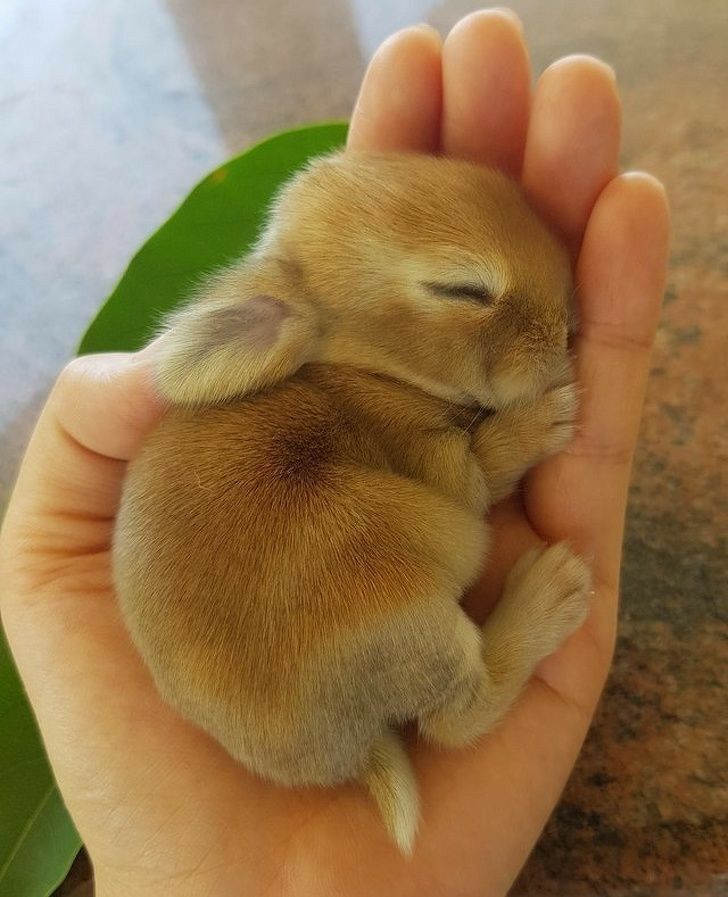 Based on this, a tool is selected - it can be a syringe with a removed needle or a drop bottle with a removable nipple. If you have time to prepare in advance, you can purchase a special kit for feeding newborn baby animals at the pharmacy. It usually includes syringes and several feeding nozzles.
Based on this, a tool is selected - it can be a syringe with a removed needle or a drop bottle with a removable nipple. If you have time to prepare in advance, you can purchase a special kit for feeding newborn baby animals at the pharmacy. It usually includes syringes and several feeding nozzles.
If the babies are already a few days old, you can try to feed with a pipette, later replacing it with a regular nipple. Approximately starting from the age of one month, babies can themselves lap from a saucer. In rare cases, it turns out to be accustomed to a saucer already on the 15-20th day of life.
The health and survival of babies depends on how well artificial feeding is performed. It is necessary to take into account both instincts and biological characteristics and reproduce the natural process of feeding to the maximum. At first, the rabbits do not perceive the artificial udder very much, they react weakly to it or completely ignore it. Therefore, especially the first feedings should be carried out very carefully, do not forcefully pour milk inside, but lightly smear one drop over the oral cavity and let the baby lick off the mixture himself. Forcibly dripping into the mouth can cause the rabbit to suffocate if the milk enters his respiratory tract. the baby should be in an upright position, that is, it must be held with one hand. Over time, the kids get used to it, and the procedure becomes easier.
Forcibly dripping into the mouth can cause the rabbit to suffocate if the milk enters his respiratory tract. the baby should be in an upright position, that is, it must be held with one hand. Over time, the kids get used to it, and the procedure becomes easier.
A newborn baby rabbit needs 4-5 ml of milk or formula per day. The frequency of feeding is 2-5 times a day (depending on how willingly and intensively the kids absorb the offered food, how they go to the toilet). Do not think, the more often you feed the rabbits, the better. Each feeding takes strength from the baby, while he gets very tired. At first, give the rabbits 10-12 drops of milk and feed no more than 3 times a day.
It is important not to overfeed babies. When they get used to the pipette, they eat more willingly and may well “overdo it” with the quantity. In this case, the rabbit's stomach is full, which can be hazardous to health. This can be avoided by taking small breaks in feeding. If, after a short pause, the baby is no longer active, it means that he is already full and no longer needs to give milk.
The milk norm increases with the age of babies. After a week, the rabbit should receive twice as much milk, and after two - three times. The approximate norm for 2-3 week old rabbits is 7-13 cc of milk (you can start adding green herbs, granulated food and water), for 3-6 weeks old - 13-15 cc (feed 2 times a day). Then you can gradually include dry food in the diet of rabbits, starting with grated carrots, chopped hay.
Many rabbit breeders recommend adding acidophilus to milk, and at the age of 7-10 days, start giving cecotrophs (rabbit droppings balls) to rabbits. The fact is that most often artificially fed rabbits die from mucous enteritis, the signs of which can be liquid droppings, the presence of blood and mucus in it, diarrhea, refusal to eat, bloating and gases.
The cause of this disease is the accelerated growth of pathogenic microflora in the caecum. The acidity level of babies and adult rabbits is very different (in the direction of greater acidity in babies). When baby rabbits are born, the inside of their stomach is practically sterile. Mother's milk provides the necessary immune protection and practically cannot bring pathogenic bacteria to babies. And when the babies open their eyes at the age of 10 days, they begin to pick up the mother's caecotrophs themselves. Artificially fed babies are deprived of this opportunity.
When baby rabbits are born, the inside of their stomach is practically sterile. Mother's milk provides the necessary immune protection and practically cannot bring pathogenic bacteria to babies. And when the babies open their eyes at the age of 10 days, they begin to pick up the mother's caecotrophs themselves. Artificially fed babies are deprived of this opportunity.
When a rabbit is just born, it does not yet have the instinct to empty the stomach, bladder and intestines. With natural feeding, these processes are monitored by the mother, who licks the tummies of her babies with her tongue, thereby squeezing out the contents from the intestines. With artificial feeding, this responsibility falls on the owner of the animals.
It is necessary to massage the tummies before each feeding, reproducing the movements of the rabbit as much as possible. If this is not done, the tummies of babies swell and a rupture of the internal organs may form. Take a damp washcloth and lightly run along the tummy, pressing lightly at the bottom.
as soon as the intestines are emptied, you can start feeding. Babies begin to go to the toilet on their own at about 2 weeks of age.
At each feeding, the cleanliness of the rabbits must be monitored. There should be no dried milk on the muzzle of the rabbit, contaminated places should be immediately wiped with a clean napkin. Make sure that there are no food residues on the baby's body. It is also necessary to monitor the cleanliness around the anus - this is usually also done by the mother, carefully licking and massaging this place.
For babies who have not received the necessary immune protection from their mother, cleanliness is an important factor in maintaining health. Bacteria and microbes that enter the body can be detrimental to a weak body. Be sure to boil all feeding equipment, feed with freshly prepared formula (keep the finished formula in the refrigerator for no more than 3 days). Before feeding, the mixture must be heated to a body temperature of 37-40 degrees. Keep your hands clean while feeding.
Keep your hands clean while feeding.
Unfortunately, artificial feeding does not always give the expected result, but you should not refuse it. As you gain experience, the results will be much better and your time and effort will be more than paid off. With the right approach and carrying out all procedures, the survival of rabbits, starting from 5 days of age, can reach 100%.
- Author: Janis
Rate the article:
(41 votes, average: 4.1 out of 5)
Share with your friends!
How to feed newborn rabbits without a rabbit
Contents
- How to feed rabbits on your own?
- What you need to know about feeding baby rabbits?
- Feeding Rules
- Watch your bowels and tummy
- This is very important!
Although not so often, but still, it happens when the rabbit dies in the first days after birth or later. There are newborn rabbits who have to be fed on their own. There is another option: after the birth, the rabbit does not accept her babies, refuses to feed them.
There are newborn rabbits who have to be fed on their own. There is another option: after the birth, the rabbit does not accept her babies, refuses to feed them.
Newborn rabbits can be self-nurtured
Rabbits cannot feed newborn rabbits even if they have mastitis. How to keep babies alive? Solve this issue as soon as possible: hungry rabbits will quickly die.
Feeding baby rabbits is no problem if you have several queens that are brooding one after the other. Take babies left without mother's milk and put them in other cages. This is an effective way, since the number of rabbits varies. But for those rabbit breeders who breed decorative breeds, it will be more difficult: the mother needs to be “replaced” by ourselves.
How to feed baby rabbits yourself?
If natural feeding is unrealistic, then it will be necessary to switch to artificial feeding. For beginners, this process is quite laborious and requires patience. Remember that it is impossible to refuse such feeding until the newborn rabbits develop the skills to eat independently. In rabbits that have just been born, the need for milk is extremely high.
In rabbits that have just been born, the need for milk is extremely high.
The chances of survival will increase if the rabbit managed to feed the babies several times
The process will be much easier if the rabbits are already a few days old, and they have managed to get the necessary substances with their mother's milk to develop immunity. No one is immune from the fact that a certain number of newborn rabbits will not be able to feed, the animals will die. You should not give in to panic: it is fully justified. In addition to feeding, create temperature conditions for the kids, for this, use an electric lamp, setting it at the appropriate height. Checking the glow is simple - put your hand on it. If it does not burn, then you can spread the rabbits.
What you need to know about feeding baby rabbits?
Feeding rabbits from the first days of life is very difficult. The main task is to choose the appropriate food. Many rabbit breeders use for this purpose:
- Powdered milk intended for feeding puppies or kittens.
 It is sold in pet stores and stores that have a lot of products for animals.
It is sold in pet stores and stores that have a lot of products for animals. - Natural goat's milk is an excellent tool that will help to grow healthy rabbits, not only week old, but also from birth. It has a lot of fat, which is so necessary for rabbits. This product is not always available as dairy goats are rarely kept in recent times.
- Fresh cow's milk can also be used. But this product in its pure form is not enough fat and nutritious, compared to mother's milk. To increase fat content and nutritional value, mix it with condensed milk. Take both products in equal proportions. Although if you give off the last drops of milk, then it contains a sufficient amount of fat. Give fresh cow's milk without a pipette, but simply from your finger. Gradually, the rabbits will begin to drink it from the palm of their hand.
All dairy products must be fresh and warm, the temperature should not exceed 37 degrees.
Bunny eats from a pacifier
In the pet store, purchase supplies that are needed to feed babies. This is also a good option. They also sell special feeding equipment. First of all, get a syringe and nipples. If this is not possible, use improvised means. In almost every home there is a dropper or a plastic bottle for eye drops. Wash all accessories thoroughly, rinse, pour over with boiling water.
This is also a good option. They also sell special feeding equipment. First of all, get a syringe and nipples. If this is not possible, use improvised means. In almost every home there is a dropper or a plastic bottle for eye drops. Wash all accessories thoroughly, rinse, pour over with boiling water.
As a last resort, use a baby bottle. But not for newborn rabbits.
As soon as the rabbits are three months old, they will no longer need teats, because by this time they can already drink milk themselves from a container with low sides. You can adapt a flat saucer or a regular nylon lid.
Feeding regulations
Remember that milk is not poured into babies' mouths. Just wet your mouth. After the rabbit licks the milk, repeat the procedure until you feed it. The fluffies themselves do not yet understand how much food they need for one feeding, so the owners themselves must monitor the filling of the tummy - it should not overflow!
Hold newborn rabbits upright like a toy soldier.
Thus, you will develop a reflex in the baby: they took it vertically, then it's time for feeding.
Feeding portions should be small, otherwise the milk will enter the lungs, the baby may choke. When feeding rabbits, one should not be zealous: no more than five times. The fact is that there is not enough fat in artificial feed, and the composition is different from what a rabbit can get, which is fed by a rabbit.
Wash babies thoroughly before picking them up
Feed a newborn rabbit no more than 5 ml of food per day. If you feed your baby five times, then one milliliter of formula or milk is required per feeding. Never rush, give a little to eat, then rest so that the rabbit catches its breath before the next portion of food.
The portion of week-old rabbits increases: give them twice as much food. But you can’t immediately, inject 10 ml, you need to do it gradually, in a milliliter, bringing it to normal. When the baby is two weeks old, he will need 15 ml of milk. Drink 3 ml each time.
Drink 3 ml each time.
The pipette, syringe or bottle must be kept clean and washed after each feeding. Feeding should not be started unless the owner has washed their hands. Sterility is an important guarantee for raising healthy rabbits that are not fed by a female rabbit.
Watch your bowels and tummy
In order for the rabbits to grow up healthy, pay attention to the cleanliness of the animals. After each feeding, clean the muzzle and the area under the tail.
Pay special attention to bowel and bladder emptying, because newborn rabbits will not cope with this problem on their own.
A rabbit, before feeding her cubs, first licks them with her tongue, presses on the baby's tummy, moving from the navel towards the hind legs.
It stimulates the bowels to empty them.
That is why the owners of animals who have to take on the role of a rabbit, do not forget about such a hygienic procedure. Otherwise, the baby will have problems with the bladder (often bursts) or cracks will appear that harm the health of the rabbit.
Otherwise, the baby will have problems with the bladder (often bursts) or cracks will appear that harm the health of the rabbit.
Baby rabbits need help with bowel movements
Every time before feeding, massage the tummy with a damp cotton pad or tissue, starting from the navel and ending with the hind legs. Only in this direction! Massage will help the rabbit to empty the intestines. If emptying did not happen, then there can be two reasons:
- food is not enough;
- all milk received was absorbed completely.
But this does not give you the right to refuse a massage. You can complete this procedure only when the rabbits are two weeks old. At the same time, the rabbits are given coarse food. For the first complementary foods, fresh carrots are perfect, which must be chopped on a fine grater. As an addition, small grass or hay with leaves is suitable. Give the rabbits and clean water. For this, it is best to put a nipple drinker. Since the rabbits themselves do not understand what this device is for, they need to be taught to drink. Rabbits, when they are one month old, should be accustomed to the food of adult rabbits.
Since the rabbits themselves do not understand what this device is for, they need to be taught to drink. Rabbits, when they are one month old, should be accustomed to the food of adult rabbits.
This is very important!
Before you start feeding your rabbit, you should know that:
- When formula-fed rabbits, keep an eye on the condition of the tummy: only an elastic and slightly convex tummy indicates that everything is in order with the fluffy. A hollow belly should be alarming.
- Rabbits should be calm and active. Anxiety and inactivity indicate that they do not have enough nutrition. In addition, hungry rabbits do not sleep well, may jump in their sleep or be nervous.
- The color of stool is also important. Healthy rabbits have a greenish litter. If problems arise, they turn brown. The size of the feces is also important: the balls are so small that they are not always visible. Watch carefully for bowel movements.
- Since rabbits are nocturnal animals, they must have a dark corner in which they can hide.



